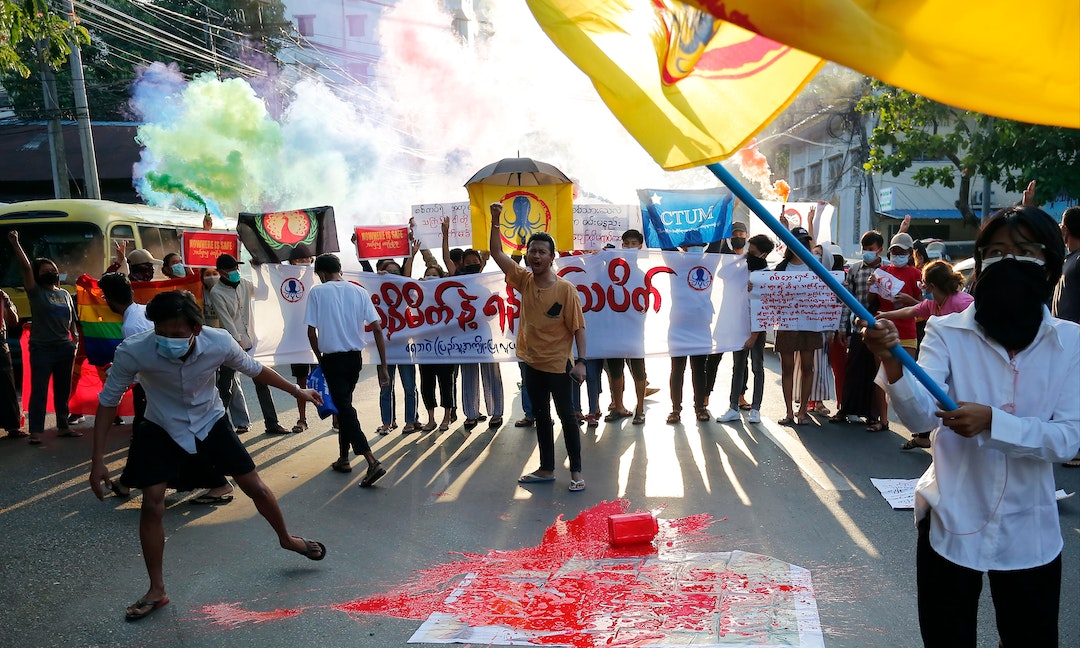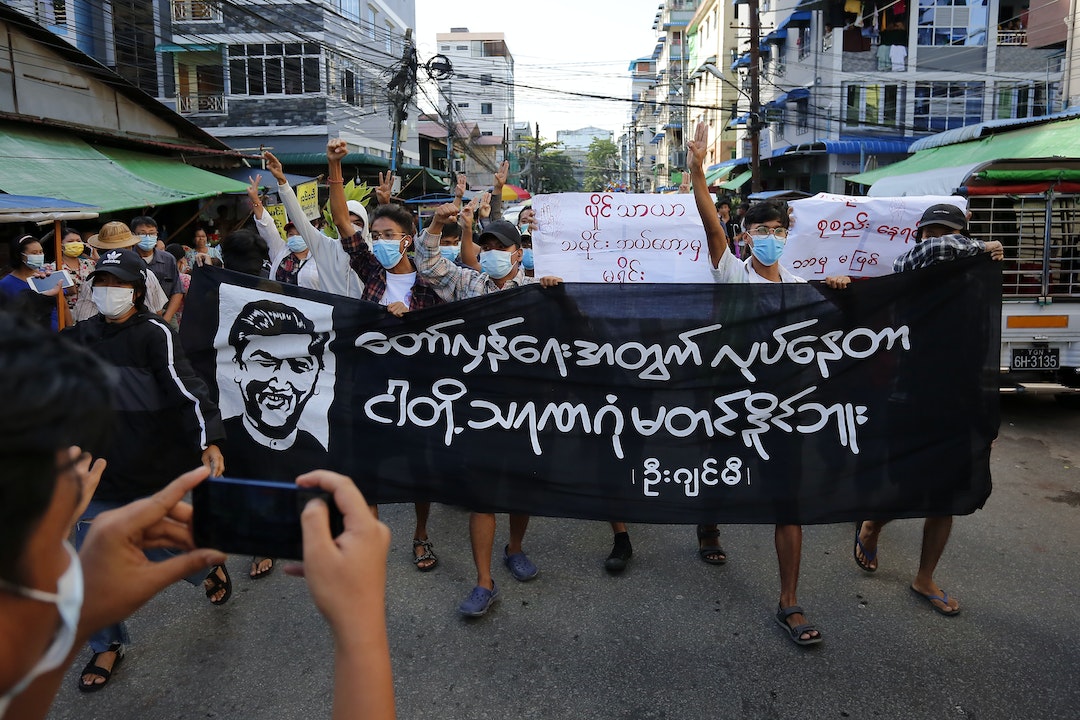
YANGON, MYANMAR — Two years after Myanmar’s military coup, a handful of young people are still protesting the coup, but, given the military crackdown on protests, the tightened security situation, and financial constraints, only a relatively few flash mob protests now occur, and they do so in urban areas.
In these protests, in places such as Yangon and Mandalay, a small group of young people gather briefly, chanting and hanging banners with slogans before dispersing.
The president of Basic Education Student’s Union, part of the All-Burma Federation of Student Unions (ABFSU), who uses the name “Molly” in media interviews for security reasons, said people in Myanmar need to be more aware of the opposition to the now-ruling junta.
“Flash mobs are making people in urban areas nervous. While the revolution goes on for the long run, people are getting back to normal life. They need to wake up to political awareness as well as the armed revolution,” she told VOA.
“We are under 18”
It is young people who, since the coup, who have been most vociferous in trying to take down the regime despite nighttime raids, unlawful arrests, and being chased down or beaten up in the streets.
The student unions federation and the General Strike Committee, the largest combination of groups organizing anti-government protests, told VOA that most of those in the flash mobs are high school students under 18 years of age. While other students return to military-controlled schools, some members of the two organizations have chosen the armed path, actively participating in guerrilla attacks.
Molly and her brother, Nyi Min Thu, joined the protests right after the February 1, 2021, coup. Nyi Min Thu was killed February 25, when the military raided the house where he was hiding.
“After my brother died, I worked harder on the revolution at risk to my life,” Molly said.

More lives at risk
As the coup passes the two-year mark, the military regime has increased its control over big cities. At Yangon and Mandalay intersections, the army has installed checkpoints and put security in place. Junta security forces have arrested young demonstrators by raiding houses and bloodily cracking down during the protests.
According to the ABFSU, some 50 student members have been detained for participating in the anti-junta movement and 30 of them were sentenced to a minimum of two years in prison. In addition, 11 protesters died during military raids.
On February 8 in Yangon’s Mayangone township, a young man wearing a black jacket and jeans pulled out a banner. Another eight young men hiding on the side of the road came out and joined him in holding the banner saying “reject the fascist election.”
“The demonstration lasted only four minutes, but we prepared for it over two weeks,” Kyaw Swar, a 17-year-old protester said, adding that as the military gains more control over cities, being out on the streets has become dangerous.
Flash mob groups said they meet regularly online to discuss protest plans and share information. Usually, they choose a location that the security forces cannot crack down on easily.
"In the past, it took a week to set up a protest in one place. Now, it takes up to a month to plan a protest because of tight security. Normally, protests take place in populated areas such as markets, parks, and bus stops where people will notice and soldiers cannot arrest us,” Molly said.
Funding decrease, spending increase
Until mid-2021, there were many strike groups conducting flash mob protests but now only 10 have survived, strike groups said. Similarly, in 2021, at least 40 group members participated in a protest, now only five to 10 participate.
"We used to manage to protest at least four times a month, but now it's very difficult to do it once a month,” said Kyaw Swar.
The military crackdown and arrests are the main reason for fewer protests and protesters, young demonstrators told VOA. Other difficulties include raising funds and finding safe houses.
“Landlords refuse to rent their homes because we are so young,” Molly said. Landlords also refuse to rent to groups of young people because they suspect the young people are protesters or will take other actions against the junta.
Strike groups rely on online fundraising campaign groups and donations from the public. Until end of 2021, ABFSU received more than a million kyat – about US$475 – per month, but donations have gradually dropped by half. In contrast, living costs and expenses for protests are rising. Protest groups said they need at least 2 million kyat a month for living and accommodation of 15 people. It costs up to 150,000 kyat to manage a strike.
“Fifteen people are living together in a house to save many. We only eat noodle soup on very difficult days. There are even days I just smoke when I am hungry," a striker who asked not to be named told VOA.
The News Lens has been authorized to publish this article from Voice of America.
READ NEXT: How Has the War Changed Ukraine?
TNL Editor: Bryan Chou (@thenewslensintl)
If you enjoyed this article and want to receive more story updates in your news feed, please be sure to follow our Facebook.







